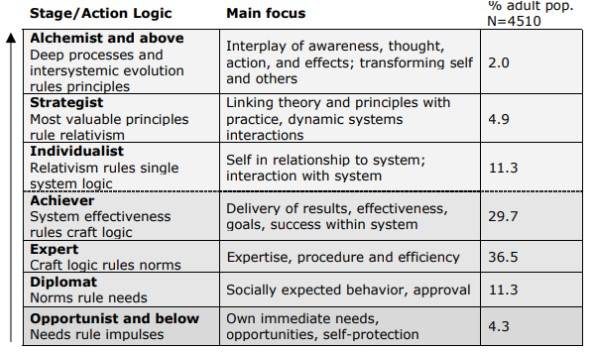
L&D: We are learning but are we developing? Fostering a growth mindset
May 1, 2019
We’ve become used to conflating learning and development into a single entity: L&D. But, why do we still use both terms if they’re the same thing? And what is the relationship between the two? Learning v Development
L&D has become shorthand for business training and when we talk of L&D, it’s usually to prioritise learning or to assume that learning will lead inexorably to development. But is that necessarily so? Or is learning and development a misnomer?
Most definitions agree that learning is about acquiring new knowledge or new skills. Success can be measured through assessment and on-the-job performance. Learning can be formally recognised by badges or certificates and translated into CPD credits. Development, though, seems far harder to quantify. It tends to be more nebulous: a soft skill and something that is left for the individual to pursue. This lack of clarity has led to the development being neglected, or simply subsumed into learning or L&D, as though development is merely a by-product of learning, something that may happen as a consequence, but almost accidentally.
Experiencing Development
Cook-Greuter identifies a number of stages in development, ranging from opportunist at the bottom of the vertical plane to alchemist at the top. The table below outlines the characteristics of each stage and charts the development journey. It also gives the percentage of the population at those various stages.

Fig. 1 (source: Making the Case for a Developmental Perspective)
If we look at the distribution of people at various levels, we can begin to understand a fundamental difference between development and learning. Without worrying about the idiosyncratic labels, we can quickly conclude that this is a hierarchy, pyramidical in shape and tapering towards a pinnacle. Progress or growth on the vertical access is not as steady or consistent as it might be on the horizontal or learning access. Put simply, not everyone will make it to the top, or if everyone did it would cease to be the top.
This structure illustrates a fundamental difference between learning and development. With learning, you aim to bring a group of learners to the same stage or standard. In Cook-Greuter’s vertical model, only a few will ever reach the final stages.
Reaching maturity
Cook-Greuter’s matrix gives us insight into the nature of development. Development becomes less about the acquisition of competence and more about a path to wisdom. If that sounds too grand a goal for L&D, then we might replace wisdom with experience or maturity.
We tend to assume development occurs organically, with little direct or formal intervention. People mature naturally, over time. Maturity is never a specified learning outcome for a training course, even if we expect mature people to be well trained.
L&D has typically concentrated on teaching someone a competency or skill. The mechanisms may differ classroom-based training, e-learning, job aids, assessments, appraisals, mentoring and so on. But the focus is on the performance outcome, not on the personal development of the individual learner. It’s learning, not development.
The dilemma for training
In the Cook-Greuter schema, one stage of development builds on another. Each step allows you to see and appreciate more. Your perspective improves and increases as you move upwards. You gain a greater understanding of where you are and where you’ve come from.
On this developmental path, you can look around you and look back. But critically you can’t look forward because you haven’t yet attained the insight that allows you to do so. You can only understand the next level once you’ve reached it. Or, if you reach it.
With development, it seems there are no guarantees. Yet, the traditional approach to training talent has been precisely to look ahead and foresee an outcome. As a typical learning outcome might put it ‘In this lesson, you will learn to etc.’.
Enabling rather than training
This view of development presents L&D with a fundamental challenge: how do you train someone for a goal that’s currently beyond their level of maturity? There’s a risk here that L&D runs into a logical dead end.A way out is to think of learning or training as an enabler of development. Development may be a personal journey, one people undertake for themselves, but training can foster that development and equip people with the tools they need to make it.
Consider, for example, Leadership Training Programmes and in particular the area of emotional intelligence. EI is about self-awareness and motivation as well as cultivating an understanding of and empathy with others.
It’s a key component of successful leadership, where personal qualities are as important as practical, strategic skills. Leadership Training itself is designed to counter the notion that leaders are born and cannot be developed.
Fostering emotional intelligence involves learning techniques for self-motivation and self-awareness. It advocates reflecting on your values and where you stand. It focuses not just on developing techniques to understand yourself, but also on acquiring the perspective to put yourself in the shoes of others.
In that, it mirrors the move in the higher reaches of the Cook-Greuter model from individualist to strategist. Individualists understand their relationship to the system or environment. But Strategists move beyond this perspective to overcome relativism and acknowledge the dynamics of a system that is beyond their personal control.
In terms of Emotional Intelligence, this translates into acknowledging the importance of social skills and recognising that collaborative, rather than authoritarian styles of leadership bring better rewards.
Enabling Development in practice
With development, you can’t be sure of the outcome or the end-stage someone will reach. Relatively few people will become leaders. So, the focus has to be on the journey, not the destination. It’s about progress and growth rather than attainment, potential possibilities rather than fixed outcomes. But although development is largely a personal pursuit, it can be fostered and abetted by peers.
In terms of practical development training, this means adopting the kind of learning strategies that allow for personal reflection and collaboration with others. L&D needs to offer support for personal growth by making learning more personalised and creating learning pathways tailored to the needs of individual learners to help them recognise where they are.
The idea that development offers multiple possibilities can be factored into training, especially into leadership programmes. Courses that involve case studies, scenarios and branching exercises emphasise potentialities rather than hard and fast conclusions.
Development is about opportunities and one’s readiness to take advantage of them. Games and simulations allow you to live out those opportunities to gain a sense of what they’re about without tying you to a single course of action. Recognition of social or informal learning gives impetus and motivation to develop as an individual.
Learning also needs to stress the influence of others in a person’s development. Networking, communities of practice, learning cultures, peer-to-peer mentoring, all speak to the role of others in facilitating our personal development. They help build the empathy component of our general emotional intelligence.
A growth mindset
If L&D is to recalibrate its overemphasis on learning, it needs to focus more clearly on development. This means promoting a growth mindset amongst learners, giving them the confidence and opportunity to look at their vertical development and move beyond the horizontal path of competencies. L&D becomes an enabler rather than an enforcer. It may be that not everyone develops at the same pace or to the same stage, but the process of development will raise the experience levels across an organisation. The greater maturity and experience acquired will bring tangible benefits in performance as well as creating a better, more attractive environment in which your people can learn, perform, and, of course, develop. Sources:
https://ryan2point0.wordpress.com/2011/06/27/learning-vs-development/
http://www.cook-greuter.com/Making%20the%20case%20for%20a%20devel.%20persp.pdf
https://elearningindustry.com/tips-facilitate-emotional-intelligence-corporate-elearning
https://elearningindustry.com/impact-of-emotional-intelligence-in-elearning
https://www.mindtools.com/pages/article/newLDR_45.htm
Got a learning problem to solve?
Get in touch to discover how we can help

